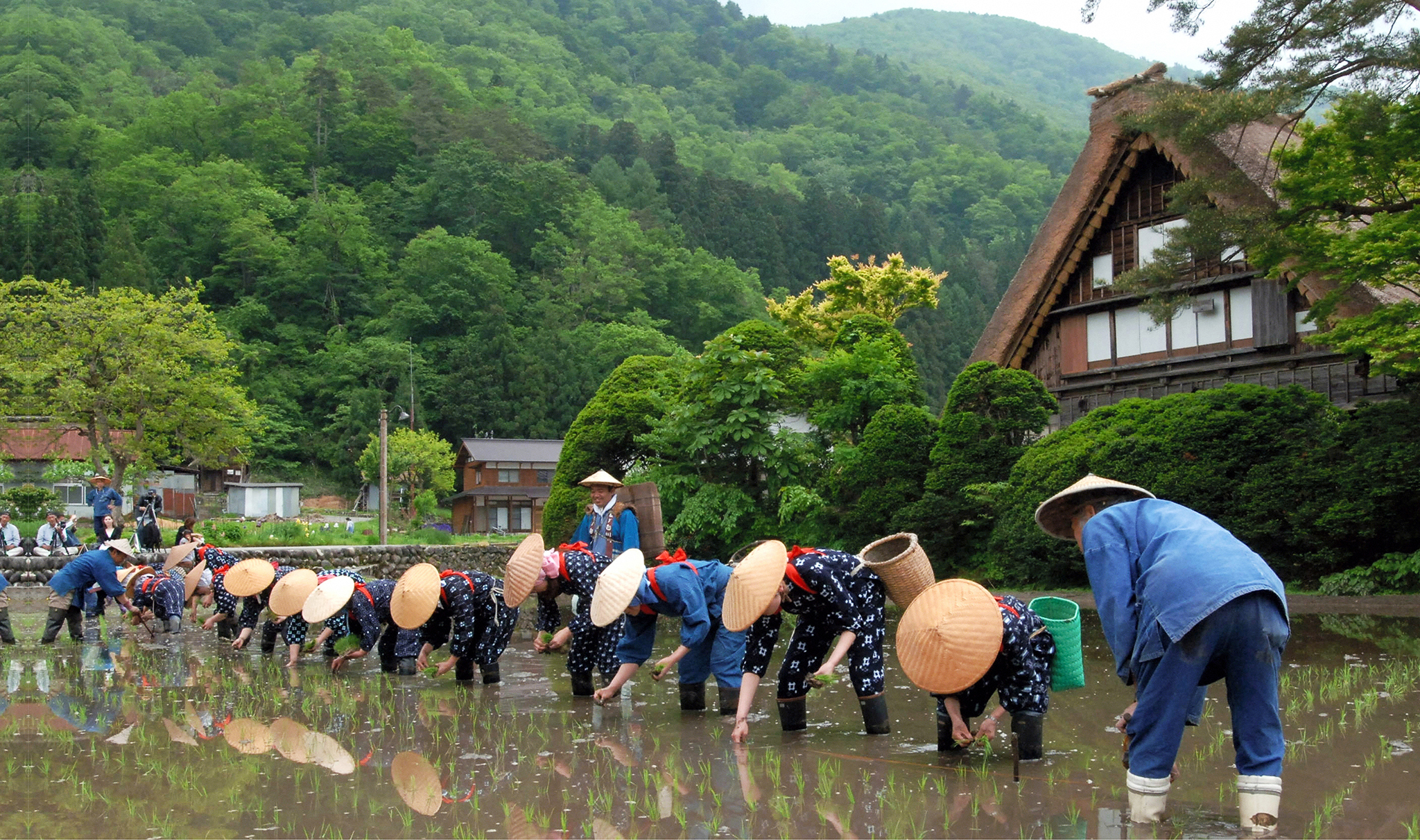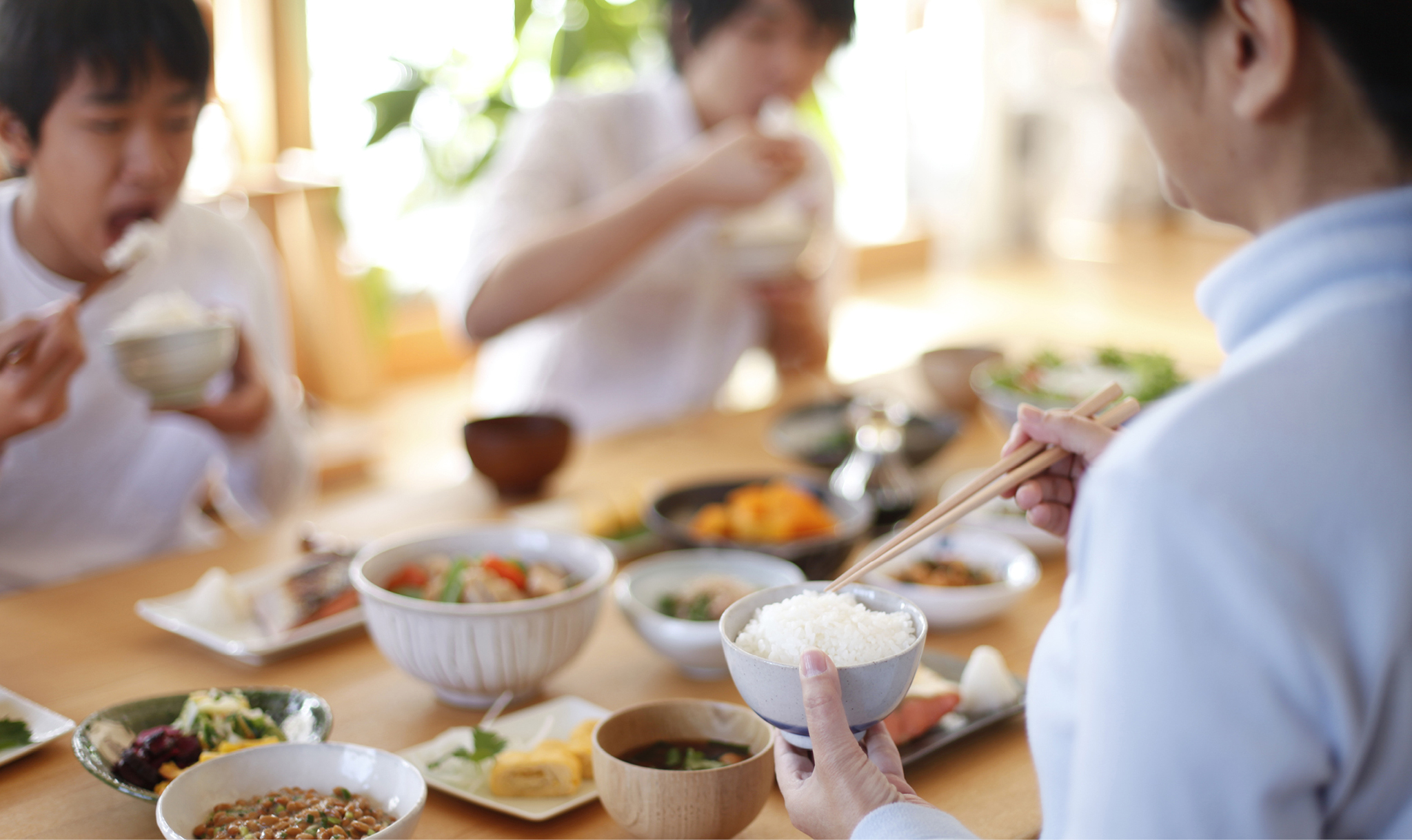g Edible Japan g Contents
ご飯
RICE
An essential staple
It’s integral to sushi and millions of daily bento (carryout boxes), is served in bowls as part of the traditional breakfast and teishoku set meals, and is also processed into mochi rice cakes and senbei rice crackers, as well as sake. Rice is the Japanese staple.
Be More Japan rice

D Rice has been cultivated in Japan for over 3,000 years.
key crop
Rice farming is a major industry in Japan, with the country’s rice paddies producing 7.5 million tons of rice annually, including food varieties like Koshihikari and sake strains such as Yamada-Nishiki. Much of it is grown in rural areas like Hokkaido, Niigata, and the Tohoku region, but small- scale farms are scattered all over the country. The production cycle begins in the spring, when farmers cultivate seedlings in greenhouses and then plow and irrigate the paddies (tanbo) before transplanting the seedlings into the tanbo’s thick, wet mud. By autumn, the rice stalks will have golden ears hanging ready for harvest.
Be More Japan rice

D Bento boxes often feature rice with fun decorations.
Popular Dishes
Rice consumption in Japan has dropped as more Western foods have entered the Japanese diet, but it still appears in myriad forms beyond sushi, bento, and plain bowls. For the ever-popular donburi, it’s served in a bowl and then topped with all sorts of things: tendon (topped with tempura), gyudon (with a beef and fried onion mix), and oyakodon (chicken, onion, and loosely scrambled eggs) are just some of the options that you might come across. Chahan (fried rice), though Chinese, is another very popular rice dish, as is rice served with Japanese, Indian, and Thai curries. Onigiri rice balls are a savory snack found in every supermarket and convenience store, while nourishing but light-on-the-stomach rice porridge (okayu) is the perfect comfort food if you’re feeling under the weather—every rice cooker in Japan features a setting for making it.
Given how widespread rice is, it perhaps shouldn’t come as a surprise that the Japanese word for rice, gohan, is used to mean both “cooked rice” and “meal.” It also appears as a suffix in breakfast (asagohan), lunch (hirugohan), and dinner (bangohan).
Be More Japan rice

D In a meal with several dishes, rice is usually served in a separate bowl.
2.5
bowls of rice per person are eaten each day in Japan on average.
Be More Japan rice
Mind Your Manners
The dos and don’ts of eating rice are easy to follow. First, don’t leave your chopsticks standing in the bowl—this is what happens in funeral rites; use the chopstick rest instead. When eating from a rice bowl, hold the bowl with one hand and bring it toward your mouth when taking a mouthful with your chopsticks. That way, any food that drops should land back in the bowl. It is also polite to finish every last grain to show your appreciation for the food and farmers.
